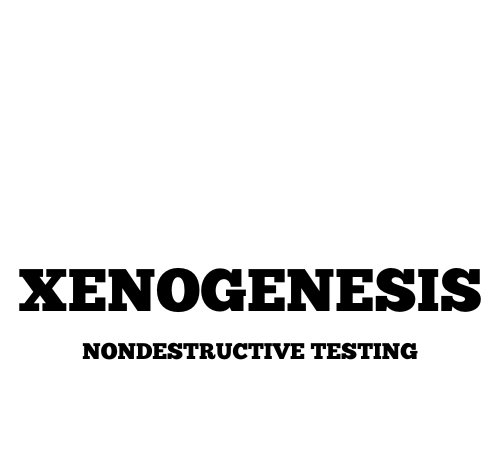The Zero-Cost Common Sense Move Every Property Manager and Building Engineer Should Make Now: Harnessing the Power of Ground Penetrating Radar
Roger Baldwin Xenogenesis RADAR Imaging of Jacksonville


The Zero-Cost Common Sense Move Every Property Manager and Building Engineer Should Make Now:
Harnessing the Power of Ground Penetrating Radar
In the fast-paced world of property management and building engineering, the ability to foresee challenges before they arise is not just a skill; it's a necessity. Often overlooked, a game-changing practice is the utilization of Ground Penetrating Radar (GPR). This advanced technology has the potential to transform the approach property managers and building engineers take towards their projects, providing numerous advantages that extend far beyond mere cost savings.
Understanding Ground Penetrating Radar (GPR):
Ground Penetrating Radar (GPR) is a non-destructive geophysical method utilizing radar pulses to image the subsurface. Originally developed for applications in geophysics and archaeology, GPR has seamlessly integrated into construction and property management due to its capacity to provide critical information about what lies within the concrete without causing any damage to the concrete or it's contents. Avoiding damage by a tenant or subcontractor is vital to keep any project running smoothly.
The Advantages of Implementing Ground Penetrating Radar:
Zero-Cost Implementation:
The allure of integrating GPR into property management and building engineering practices lies in the fact that the costs can be seamlessly transferred to the tenant building out the space. This means property managers can embrace the benefits of this cutting-edge technology without any direct financial impact on their budget.
Furthermore, the process of passing costs to tenants can be framed as an investment in their safety and the overall success of the construction or renovation project. By doing so, property managers can cultivate a positive relationship with tenants while enhancing the reputation of the property as a forward-thinking and technologically advanced space.
The question is how is this zero cost to property managers and building engineers? The answer is simple: The property managers and building engineers simply have to make it a requirement prior to any cutting or coring on their project just by making a small change to the contract.
Avoiding Headaches:
GPR is a powerful tool for property managers and building engineers to proactively identify and mitigate potential challenges during construction or renovation projects. By revealing subsurface utilities, structures, and potential obstacles, GPR significantly reduces the risk of encountering unexpected barriers. This not only minimizes project delays but also streamlines the overall construction process, allowing for smoother project management.
For example: Consider a new tenant has leased a space in your multi tenant building. The new tenant proceeds to renovate the space to meet their needs and one of the changes is adding a power outlet under a conference table. To complete this task a new 3"+ size hole needs to be cut into the concrete. If in the process of making the hole a conduit is cut it is a tragedy and the contractor will typically have to repair it. The unforeseen cost to property managers and building engineers is when the power goes to a neighboring unit. The neighboring unit is typically going to be unhappy with no power for a time and the first call will be to the property managers office. Why not just avoid the damage altogether at zero cost simply by making ground penetrating RADAR mandatory in your properties. Ground Penetrating RADAR is a proven technique for locating items to avoid. Most areas only require the hole to move a few inches to avoid the problem and prevent the headache altogether.
Possibly Lowering Insurance Costs:
Insurance costs are often a significant component of project budgets. By proactively utilizing GPR to detect and address potential hazards, property managers and building engineers can position themselves as safety-conscious professionals. This commitment to risk reduction may translate into lower insurance premiums, contributing to overall project cost savings.
To bolster this point, property managers can collaborate with insurance experts to provide insights on how GPR can influence risk assessments and subsequently impact insurance costs. Including statistical data or industry benchmarks can add credibility to the argument.
Preventing Loss of Power:
Accidental damage to conduits is a common cause of power outages during construction. GPR becomes an invaluable asset in preventing such disruptions by identifying electrical conduits and other utility lines accurately. This not only safeguards the project timeline but also contributes to a safer working environment.
In the past 20 years Xenogenesis of Jacksonville has been called to projects after a conduit has been damaged. This is never a great situation and sometime has resulted in the coring personnel requiring hospitalization, which is never a good situation for a building. Every time this situation happened it could have been avoided if they had just called a GPR specialist to evaluate before performing the core.
Preventing Damage to Structure:
GPR's ability to not only identify utilities but also detect changes in the concrete floor is crucial for preventing structural damage. To prevent structural damage rebar and tension cable can be easily located using ground Penetrating RADAR. This will ensures that construction or renovation activities do not compromise the integrity of the building, resulting in long-term cost savings and preserving the property's value.
Many years ago Xenogenesis of Jacksonville was requested to scan for tension cables in the building based on a prior incident. Upon investigation we found that a contractor in the past was coring holes and had hit a tension cable. Tension cables typically carry 60k pounds of force or more. By cutting the cable all of the force was released and there were only so many directions that the force could go. In the case mentioned the cable force exited the edge of the slab and encountered a wall. The wall collapsed causing in excess of 1M in damages that could have been easily avoided. Upon scanning the floor for further cores we found the cables were approximately 2 feet apart and could have been easily missed simply by scanning prior to coring.
Implementation Steps:
Implementing GPR in property management and building engineering is a straightforward process that involves incorporating it into existing project management workflows. Requiring GPR services before initiating any cutting or coring activities on the property can be seamlessly integrated, ensuring a preventive approach without disrupting existing practices.
Conclusion:
In the ever-evolving landscape of property management and building engineering, adopting innovative technologies is not just an option; it's a necessity. Ground Penetrating Radar emerges as a zero-cost common sense move that promises to enhance project efficiency, prevent headaches, and contribute to a safer and more cost-effective construction process. By requiring GPR services before cutting and coring, property managers and building engineers can elevate their practices to new heights, ensuring success in an industry that demands forward-thinking solutions.
Xenogenesis of Jacksonville provides RADAR imaging to the Jacksonville area as well as, the surrounding North Florida area. We have over 20 years of experience providing ground Penetrating RADAR. www.radarjacksonville.com
1500 Beach Blvd
Jacksonville Beach, FL 32250


